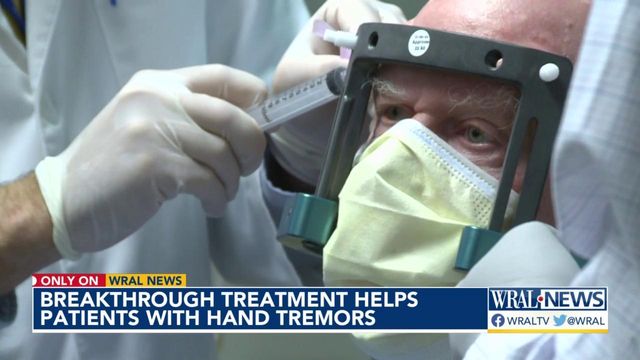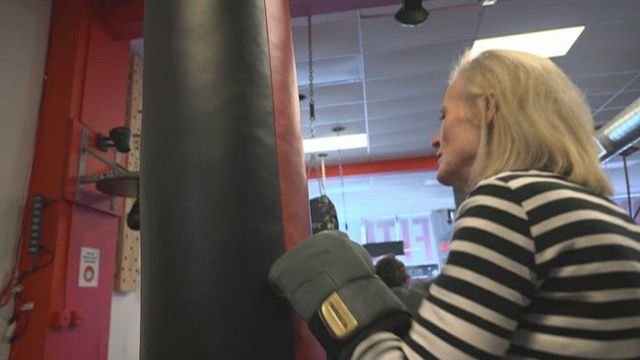Breakthrough procedure eases tremors with ultrasound
Duke neurosurgeons have now begun a non-invasive program to minimize or eliminate essential tremors. It’s a condition that causes uncontrollable shaking of the hands, often seen in patients with Parkinson’s or Epilepsy.
David Phillips, 72, of Fayetteville has lived with the condition known for about 10 years. Over time, the problem only grew worse.
"My handwriting got more and more difficult to read. Eating became a problem with a shaky fork or spoon. It just got a little more difficult to manage life and all the things that most days you take for granted and do it without even thinking about it," he said.
He felt uncomfortable in public places.
"I always got to the point of being self-conscious because I knew people were watching me try to eat," he said.
For him, a procedure called "Deep Brain Stimulation" was too invasive. Duke offered Phillips a newer option.
"The told me they would actually work outside the brain instead, and that just really hit the target for me," said Phillips.
The procedure involves MRI imaging paired with HIFU, an acronym for "high intensity focused ultrasound."
Neurosurgeon Dr. Nandan Lad says the procedure has been refined over the past few years.
"There’s a focus ultrasound machine that is tailored for delivering 1,000 beams of ultrasound energy to a very specific target in that tremor circuit," said Nandan.
"This is an incision-less surgery. There’s essentially no bleeding risk with that; very low, if not zero infection risk," said Neurosurgeon Dr. Stephen Harward.
A team of specialists closely monitor the application and the patient’s comfort with periodic breaks to check on or reassure the patient.
Each time, they tested his fine motor skills with tasks like drawing straight lines, making his pen move through a spiral path and writing his own name.
Neurologist Dr. Jeffrey Cooney held a series of Phillip’s drawings, the first of which looked uncontrolled with jagged attempts. After a series of applications, his efforts improved.
Cooney displayed the surprising progress through each treatment. The later efforts showed Phillips’ pen drawing within the spiral image. Lines that were once jagged were smooth, and even his signature improved dramatically.
Phillips will have to wait nine months before getting his left hand treated.
After the procedure, he returned to his recovery room. Once his son and wife arrived to greet him, Phillips shed a few tears of joy and relief. Together they celebrated. A cake was delivered to his bedside – and Phillips was happy to cut it.
"I think it's a really exciting time in the field of neuro-modulation." He added, "Our patient today has had that basic thing that many people take for granted, eating, drinking, writing," said Lad. "We can restore the function, restore the quality of life. We've done something really meaningful and impactful."
At a younger age, Phillips enjoyed the art of calligraphy. The essential tremors robbed him of that skill, but now, with a steadier hand, he plans to reclaim that hobby.











